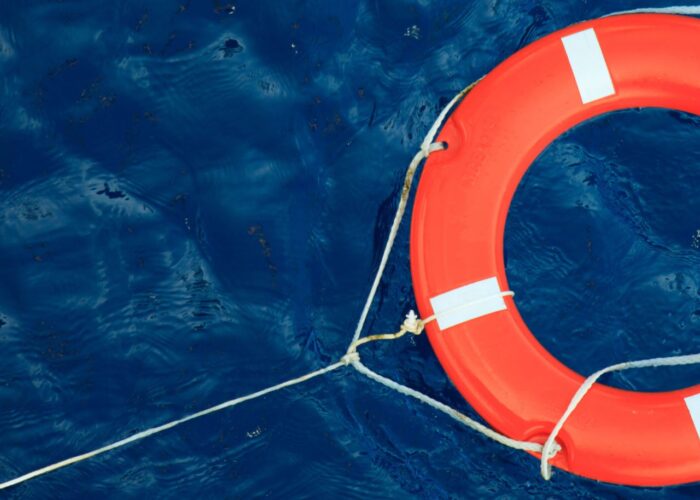The digital advertising ecosystem has revolutionized the way brands connect with their audiences, offering precision targeting, scalability, and data-driven insights. However, this transformation has introduced significant risks, with one of the most pressing concerns being brand safety. Brand safety refers to practices that safeguard a brand’s reputation by ensuring its advertisements do not appear in harmful or inappropriate environments. As the digital landscape continues to grow and evolve, ensuring brand safety has become both more challenging and more critical. This blog delves into the concept of brand safety, explores strategies for mitigating risks, and highlights the essential tools and technologies that advertisers can use to protect their brand’s reputation.
Understanding Brand Safety and Its Importance
At its core, brand safety is about preserving a brand’s image and preventing reputational harm caused by ad misplacement. Inappropriate ad placements — such as those appearing next to hate speech, violent content, misinformation, or explicit material — can significantly damage consumer trust. For example, a family-oriented brand whose ad is displayed alongside controversial or explicit material could face backlash from its audience, leading to a loss of credibility and diminished customer loyalty.
The need for brand safety has intensified with the growth of programmatic advertising. This automated approach allows for efficient, large-scale ad placements, but it also reduces the level of control advertisers have over where their ads appear. As a result, brands may inadvertently find their ads displayed in contexts that conflict with their values or harm their reputation.
While brand safety focuses on avoiding harmful placements, the concept of brand suitability takes this a step further. Brand suitability ensures that ads not only avoid harmful environments but also align with the brand’s identity and target audience. For instance, while a video game website may be considered a “safe” environment, it might not be suitable for a luxury fashion brand targeting an older, affluent demographic.
The Evolution of Brand Safety Concerns
The digital advertising landscape is dynamic, with new risks emerging as technology and consumer behavior evolve. One of the most significant challenges is the prevalence of user-generated content. Platforms like YouTube, TikTok, and Instagram rely heavily on content created by users, which varies widely in quality and appropriateness. Even with moderation tools in place, the sheer volume of content makes it difficult to ensure that every piece aligns with a brand’s values.
Another growing concern is the spread of fake news and misinformation. Ads that appear on websites known for spreading false narratives can inadvertently fund these operations and associate the brand with untrustworthy sources. In today’s polarized world, this can lead to severe backlash and tarnish a brand’s credibility.
Social media platforms, while offering unparalleled reach and engagement, also pose risks. Brands must navigate issues like hate speech, political propaganda, and harmful trends that can quickly spiral out of control. As digital platforms continue to evolve, advertisers must stay vigilant and adapt their strategies to address these emerging challenges.
Strategies for Ensuring Brand Safety
To protect their reputation in this complex environment, brands must adopt a proactive and multifaceted approach to brand safety. The foundation of any effective strategy is transparency. Advertisers need full visibility into where their ads are being displayed. This requires the use of advanced analytics and reporting tools that provide real-time insights into ad placements.
Verification tools play a crucial role in maintaining brand safety. These platforms use artificial intelligence to analyze content and block ads from appearing in environments that don’t meet predefined safety standards. By leveraging these tools, brands can significantly reduce the risk of harmful ad placements.
Another essential strategy is content filtering. Brands can create exclusion lists to prevent their ads from being displayed alongside specific categories of content, such as violence, adult material, or political content. This level of customization allows advertisers to tailor their ad placements to align with their values and audience expectations.
Contextual targeting is another powerful tool for ensuring brand safety. Unlike behavioral targeting, which focuses on user data, contextual targeting places ads based on the content of the webpage. This approach not only reduces privacy concerns but also ensures that ads are displayed in relevant and appropriate environments.
In addition to these technical strategies, brands must establish clear guidelines for brand suitability. These guidelines should define the types of content and environments that align with the brand’s values and mission. By setting these standards, advertisers can ensure consistency across all campaigns and platforms.
Collaboration is also critical to maintaining brand safety. Brands should work closely with their agency partners, technology providers, and platforms like Google, Meta, and TikTok to implement best practices and stay informed about emerging threats. Joining industry initiatives such as the Trustworthy Accountability Group (TAG) can also help brands stay ahead of the curve.
The Role of Artificial Intelligence in Brand Safety
Artificial intelligence (AI) and machine learning (ML) have transformed the way advertisers approach brand safety. These technologies enable real-time monitoring and decision-making, allowing brands to respond to potential risks quickly and effectively. AI-powered tools can analyze vast amounts of content within milliseconds, identifying potentially harmful environments before ads are displayed.
For example, predictive algorithms can assess the likelihood of harmful content based on historical data and emerging trends. This proactive approach helps brands stay one step ahead of potential threats. In addition, AI can dynamically update exclusion lists and safety standards, ensuring that campaigns remain relevant and effective in a constantly changing landscape.
Advanced reporting capabilities are another benefit of AI-powered tools. These systems provide detailed insights into ad placements, performance, and safety compliance. By analyzing this data, brands can identify patterns and make informed decisions to optimize their campaigns.
Case Studies: Learning from Real-World Examples
The importance of brand safety becomes evident when examining real-world incidents. In one case, a global beverage company faced widespread criticism when its ads appeared alongside controversial content on YouTube. The backlash not only harmed the company’s reputation but also highlighted the need for stricter ad placement controls. By implementing verification tools and collaborating with the platform, the company was able to regain control over its ad placements and restore consumer trust.
Similarly, a luxury retailer took proactive measures during a highly polarized election season to avoid appearing on “fake news” websites. By leveraging contextual AI and creating detailed exclusion lists, the retailer successfully protected its brand image while maintaining the effectiveness of its advertising campaigns.
These examples underscore the importance of vigilance and strategic planning in maintaining brand safety.
Case Studies: The Importance of Brand Safety
-
A Beverage Brand and User-Generated ContentA global beverage brand faced backlash when its ad appeared alongside controversial YouTube content. By deploying ad verification solutions, the company shifted to safer placements, reclaiming consumer trust.
-
Luxury Retailer Avoids Fake News SitesA luxury retailer proactively excluded misinformation domains using exclusion lists and contextual AI. This strategy safeguarded its brand image during a highly polarized election period.
Cross-Channel Consistency: A Holistic Approach
In today’s multi-channel world, maintaining consistency across platforms is essential for ensuring brand safety. Advertisers must implement unified safety standards that apply to all channels, including display ads, social media, video platforms, and mobile apps. This requires the use of cross-channel analysis tools that provide a comprehensive view of ad placements and performance.
By adopting a holistic approach, brands can ensure that their messaging remains consistent and impactful, regardless of where their ads are displayed. This not only enhances brand safety but also strengthens consumer trust and loyalty.
Looking Ahead: The Future of Brand Safety
As the digital advertising landscape continues to evolve, the importance of brand safety will only grow. Governments and regulatory bodies are likely to introduce stricter standards for digital advertising, holding brands accountable for their ad placements. This increased scrutiny will require advertisers to adopt more robust safety measures and stay ahead of emerging risks.
The shift from brand safety to brand suitability will also gain momentum. Advertisers will place greater emphasis on aligning their ad placements with their brand values and audience preferences. This will require a deeper understanding of consumer behavior and the use of advanced targeting techniques.
Privacy-first solutions will play a significant role in the future of brand safety. With the decline of third-party cookies, contextual targeting and first-party data will become the primary methods for ensuring relevant and safe ad placements.
Finally, AI and machine learning will continue to drive innovation in brand safety. These technologies will become more sophisticated, enabling advertisers to predict and mitigate risks with greater accuracy. As AI-powered tools evolve, they will play an increasingly central role in maintaining brand safety and suitability.
Future Trends in Brand Safety
-
Increased Regulation: Governments may impose stricter digital ad standards, holding brands accountable for placements.
-
Greater Focus on Brand Suitability: Suitability will gain equal importance as safety, driving precision in ad targeting.
-
Privacy-First Solutions: As cookies fade, contextual and first-party data approaches will dominate.
-
AI-Powered Solutions: Real-time adaptability will evolve, enabling brands to anticipate threats.
In the fast-paced world of digital advertising, brand safety is no longer a luxury — it is a necessity. Protecting a brand’s reputation requires a proactive and strategic approach that combines advanced technology, clear guidelines, and industry collaboration. By leveraging AI-powered tools, adopting contextual targeting, and establishing robust safety standards, advertisers can navigate the complexities of the digital landscape with confidence.
As technology and consumer behavior continue to evolve, staying ahead of emerging trends will be critical for maintaining brand safety. By prioritizing transparency, suitability, and consistency, brands can safeguard their reputation, build trust with their audiences, and ensure long-term success in a competitive marketplace.



